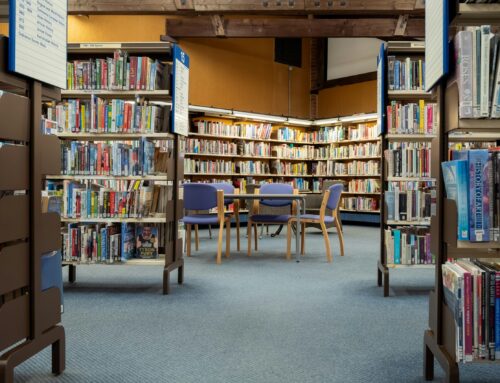 Shakespeare’s Importance in Learning
Shakespeare’s Importance in Learning
There are many elements of traditional learning that can be fostered in the engagement with Shakespeare’s works, such as reinforcing student responsibility, encouraging discussions presented by students, and reflecting tasks in real-world scenarios.[1] These foundational aspects are demonstrated across all subjects of academic environments, including English classrooms and their implementation of classics such as Shakespeare into students’ curricula. These texts grant students the opportunity to examine aspects of universalism that focus upon the shared interest in “seeking truth,” where such provides grounds to enlighten each other on issues within past and present environments.[2] In this joint interest, students of varying backgrounds and experiences are able to come together in their learning, thus enabling productive and engaging discussions.
A major aspect of analyzing and interpreting Shakespeare’s works is in the socially-responsive manner of approaching different topics and issues brought to light within his texts. For example, a student is able to examine The Tempest through a feminist lens in order to discuss the domineering dynamic between Prosepero over his daughter Miranda. This gives students the opportunity to not only observe the social ills within Shakespeare’s time period, but also how they could potentially relate to the world around students today.[3] In this, students can observe their own social realities and gain a more in-depth consciousness of the world around them, instilling the practice of transformative thinking and presenting a desire for social change.[3]
In relation to this aspect of “transformative thinking”, students are also given the opportunity to take moral lessons from Shakespeare’s stories. Much of his works contain a “great stage of fools”, which help to show students the consequences that ensued as a result of their actions, which not only affected the “foolish” characters, but also the people and/or environment surrounding them.[4] Because of this, his works allowed a sense of wisdom to be brought to students, shedding light onto the characteristics that they should avoid while bringing about the realities of the predominant nature of error and folly within the world around them.[4] In such, he was able to enlighten students on the characteristics that they should represent, where often times the “hero” or “good” characters tended to have more progressive or heartfelt morals than the antagonists. And yet, some of his works also show how the actions of antagonists hurt (and sometimes ended) the lives of the protagonists, relating back to the aspect of his works representing life lessons for students and illustrating the importance of containing more good-natured traits within their own lives.
Ways of Implementing Shakespeare in Classrooms
While there are numerous ways in which learning Shakespeare can positively impact the lives and educational aspects of students, it’s important to note the challenges that come in doing so. At large, educators explain that a hurdle in teaching his works is in the ability to enlighten and inspire their students to become engaged with the texts, often observing the overwhelming impact that they have at first glance.[5] But, in approaching the topic with care, utilizing modern technology that’s familiar to students, and employing specific modes of learning, educators can foster an engaging environment that instills interest and excitement within students.
One specific manner of teaching Shakespeare is in active learning. Within an article on the topic, the discussion was largely based around studies on learning modules that consisted of techniques that differed from the usual mode of lectures, such as seminars and role-playing exercises in performances.[1] In this, the results showed that there was a growth in critical thinking, which allowed for a transfer of responsibility and opened up decision making skills in students’ interpretation of the plays.[1] If active learning had not been implemented for these students, educators found that they would not have gained the same critical thinking skills.[1] Thus, more hands-on learning of Shakespeare’s works is necessary in order for students to fully reap the benefits of learning from such.
In this active learning and other means of teaching Shakespeare, a lot of planning goes into creating lesson plans that engage students with the texts, which can lead to educators feeling overwhelmed and/or reluctant to teach the subject because of time restraints. However, some schools have been able to come up with solutions, specifically in the use of modern technology. One study examines these difficulties and emphasizes the importance for students to be able to interact with the text(s), initiating the use of a program called WebQuest. In this program, teachers are able to efficiently plan and write innovative lessons, giving students “…roles, creative activities, and unique assignments designed to stretch their thinking,” thus enhancing their understanding of the text.[6] With these aspects, teachers are also able to contribute their own personality and those of their students into the lessons, making for a unique and engaging experience for classroom environments through selected backgrounds, internet links, and visual effects.[6] This approach to active learning helps to integrate the texts into classrooms with the use of technology that teachers and students are familiar with presently.
Another use of technology within classrooms is described within a study that examines the benefits of students participating in a connected learning project, which served to teach them Shakespeare in the form of essay collaboration. In conducting the research for these essays, students utilized videos that “[incorporated] multimodal texts, media, and narration,” which provided the opportunity for deeper analysis of themes within his works that may have been previously overlooked.[7] With these activities, students were also able to gain a sense of responsibility in the self guided and independent nature of these materials.[7] Overall, the use of modern technology in lessons associated with Shakespeare helps to encompass a learning environment that preserves a student’s independence while also providing them the necessary guidance to succeed in comprehending his works. In these lessons, it’s also crucial that students are hands-on with their learning, carrying out performances and conducting student-run seminars that allow them to gain a deeper and more dynamic understanding of Shakespeare.
How Does PSG Fit In?
Here at Publishing Solutions Group, we strive to provide polished content for students and teachers in order to enhance learning. In subjects like Shakespeare and the discussion of his works, we find it crucial to utilize modern approaches in order for students to better understand the meanings presented, which is why one of our recent projects involved translating numerous Shakespearean texts, one of which being Cymbeline, in order to make his writing more digestible for students/readers new to his works. In such projects, we strive for high levels of comprehension and aim to provide an opportunity for students to become interested in subjects they previously hadn’t considered. With our highly skilled team, we work together to ensure that educational experiences for both teachers and students enhances their academic experiences.
[1] https://www.tandfonline.com/doi/full/10.1080/00098655.2019.1705752
[2] https://doi.org/10.1080/10457097.2023.2218144
[3] https://doi.org/10.1002/rrq.562
[4] https://doi.org/10.1080/14748460701440962
[5] https://doi.org/10.2307/821950
[6] https://doi.org/10.2307/821952
[7] https://doi.org/10.1080/13569783.2019.1687289
Image free to use under the Unsplash License.




